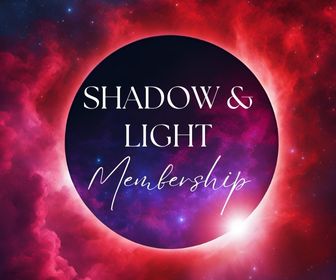How do you cope when shit hits the fan?
Anxiety is a reality we all need to deal with sooner or later. And how you support yourself through it makes all the difference in the world.
If you struggle to calm down, suffer from unresolved trauma, or have a highly charged and wound-up nervous system this article will give you a few helpful ideas for learning how to self-soothe.

Spiritual Wanderer Course:
Being a lone wolf and a spiritual wanderer is a sacred calling in life – a unique and alchemical path of awakening. You don’t need to feel lost, alone, or stuck on your journey any more. It’s time to meet your soul’s deep needs for clarity, self-acceptance, and empowerment. Let us show you how …
Please note: issues such as PTSD are complex psychological matters that can’t be solved simply by self-soothing. Self-soothing is a complementary technique that you can use to ‘keep yourself together’ but it won’t get to the root of the issue. Please research the term ‘somatic experiencing’ or ‘EMDR’ if you would like to get to the root of releasing trauma.
Table of contents
What is Self-Soothing?
Self-soothing is an emotional, physical, psychological, and biological developmental task every child must learn to develop growing up. Put simply, self-soothing is the ability to calm ourselves down after experiencing something stressful.
There’s a lot of controversy surrounding when the appropriate time for a child to self-soothe happens – but ultimately, at some point during our early pre-teen years, self-soothing needs to occur.
Who is Responsible For Teaching Us How to Self-Soothe?
There are differing opinions. Some childhood experts and parents believe that self-soothing needs to happen as a baby (e.g. the infant learns to calm themselves down in their cot). Other experts and parents believe that self-soothing is impossible for a baby to develop and must instead be modeled by the parents.
In any case, if you experienced early childhood trauma, neglectful or emotionally absent parents, a chronically mentally or emotionally abusive environment, or an overall dysfunctional family, you may have been prevented from learning how to self-soothe.
12 Signs You Need to Learn Self-Soothing

Here are some signs to look out for:
- You tend to worry about everything
- You live a rushed and frantic life
- You struggle to slow down
- You have panic attacks
- Anxiety follows you throughout the day
- You tend to overthink everything
- You get stuck in repetitive cycles of thought
- You suffer from some form of trauma
- The world overwhelms you
- You approach new situations out of a place of fear rather than curiosity
- You feel unloved or unsupported by others
- You feel disconnected from your inner self
Of course, I want to mention here that self-soothing isn’t a panacea and won’t solve all of the symptoms noted above. BUT I can guarantee that if you make self-soothing a regular practice you will experience some kind of benefit.

Shadow & Light Membership:
⭐️⭐️⭐️⭐️⭐ "Receiving these messages is a beacon of light and hope for me in currently very challenging times. The words of wisdom speak right to my soul, guiding and encouraging me further on my path. I highly recommend Shadow & Light to everyone who seeks to develop and cultivate a relationship with the Inner Self." – Karin
The Benefits of Self-Soothing
Everyone is different, but here are some benefits you may experience:
- Greater ability to ‘hold yourself together’
- Feeling more supported and upheld
- More groundedness
- Deeper connection with your inner self
- Enhanced self-love and concern
- Increased ability to be mindful
- Ability to pause and see the bigger picture
- Getting out of your mind and into your body/senses
- More connection with your true feelings and perspectives
- Reduced physical ailments and illnesses
- And of course …
- Less stress and anxiety!
Don’t take this list as being written-in-stone – you may very well find a surprising benefit that hasn’t been listed above because you experience the world uniquely!
7 Self-Soothing Practices For Beginners

I’m not going to list any fancy visualization or meditation techniques here, don’t worry. Self-soothing needs to come naturally, so I strongly encourage you to seek out what works for you. You are more than welcome to build off the list of suggestions I will explore below.
A word of warning: there are healthy and unhealthy forms of self-soothing.
Not everything that ‘feels good’ when it comes to self-soothing is actually good for you.
Don’t use the excuse of trying to relax as a way of justifying toxic behaviors or habits that may harm your mind or body. Examples of negative forms of self-soothing include food binging, alcohol use, drug use, gambling, TV show binging, excessive shopping – you get the picture!
Here are some healthy and gentle self-soothing techniques that anyone who struggles with anxiety, PTSD or overly-sensitized nervous systems can use:
1. Self-holding
Okay, the term ‘self-holding’ may sound fancy – but it actually means giving yourself one big bear hug! Self-holding is a practice advocated by Peter Levine (the creator of somatic experiencing) with the intention of anchoring and calming the nervous system. It has been proven that hugs are good for you as they release the feel-good hormone oxytocin – and self-hugs are just as effective! So when you are feeling stressed or like you’re on the verge of having a meltdown, go somewhere quiet. Sit down. Hug yourself. Really focus on what it’s like to be hugged and held and let the feelings sink in.
2. Gentle hand technique
When you are feeling stressed, triggered or overwhelmed, close your eyes and focus on your body. In which area of your body do you feel the fear most strongly? Rest a gentle hand over that part of your body – like a mother would over her child. The gentle hand technique is essentially a self-parenting technique that works well alongside inner child work (but that’s a whole other can of worms). Wait a few seconds or so and focus on the hand gently rested over your fear. You may find your fear and anxiety gently decreasing after a minute or so.
3. Cross your arms, rock, deep breathing
Those who experience anxiety or PTSD may feel fractured, chaotic, split, scattered, broken or blown apart. In this state, it can be hard to define your ‘edges’ and stay in your body. When triggered by something that intensely activates the nervous system, you can use this technique. Crossing your arms helps to give you a sense of being contained and rocking mimics the feeling of being a fetus nestled in the womb (or if that feels weird, in a loving parent’s arms instead). Pair this with slow and deep breathing and you have a powerful form of self-soothing.
Would you like to save this?
Your information will never be shared.
4. Get your body moving!
When any form of anxiety or stress occurs, a tremendous amount of energy is generated in the body as it prepares to fight or flight. In order to expel some of that excess energy, get your body moving. Try jumping up and down, going for a long walk outside, or jogging in the spot (or around the block). You may also like to expel your breath using a technique such as the ujjayi yoga breath.
5. Invest in a weighted blanket
This self-soothing technique can be a bit pricey, but it’s worth it in my opinion. If you struggle with poor sleep (which often accompanies anxiety and PTSD), consider investing in your own weighted blanket.
Weighted blankets work on the basis of applying deep touch pressure stimulation (DTPS) evenly across your body which releases happy chemicals in your brain that are responsible for relaxation.
The weighted blanket I own is from an Australian company (because I live in Australia) called Neptune Blankets and I use them for sleep. You can choose the right blanket based on your body weight – generally, the best blanket for you is based on 10% of your body weight. There are other brands out there which you can find. Two great brands are:
- Quility weighted blankets (found on Amazon)
- YnM weighted adult blankets (found on Amazon)
Another interesting self-soothing tool is the deep pressure vest. Deep pressure vests are used by those who have sensory processing disorder or autism – but they can also be used by those who struggle with anxiety. Basically, a deep pressure vest is a vest you put on that tightly compresses your body – similar to a hug. If you would like a lighter option, you can always opt to try out a compression vest used by athletes, such as this one for women (which is marketed as a ‘trainer corset’) or this one for men.
6. Tulsi (Holy Basil) Tea
OMG folks, omg. I don’t usually use abbreviations like these in my articles, but this stuff is amazing. When my nerves are writhing with anxiety, holy basil is my go-to herb for calming down. Holy basil is an adaptogenic herb meaning that it helps the body adapt to stress. Holy basil is referred to as “holy” for a reason – in India, it is considered the “Queen of Herbs” due to its spiritual and restorative properties. Holy basil can also be used for adrenal fatigue, depression, high blood pressure, insomnia, and headaches. You can get some high-quality holy basil here.
Of course, you might be different and prefer other herbs such as damiana or chamomile. But having tried many relaxing herbs, holy basil is always #1 for me. If you haven’t tried this amazing herb yet, please do! You can order from Amazon or go to your local health food store and they will probably stock some.
7. Self-massage
Of all the self-soothing practices listed in this article, the one I enjoy (and do) the most is self-massage.
When we are stressed our muscles tend to contract as it’s the body’s way of entering the fight or flight mode. But what happens when anxiety and fear form the backdrop of your life? The answer is that muscle contraction starts evolving into deep-seated muscle tension and knots which need to be massaged out.
Massage helps to loosen your muscles, improve blood circulation, detoxify the body, and revitalize your energy. Like hugs, massage involves pressured touch which stimulates happy-hormones in your brain like dopamine and serotonin.
You don’t need much for self-massage – only really your hands. But I do recommend getting some kind of tool as it will make the experience much more enjoyable. I have three different massage tools which I will link to below and describe what they are for:
- A Gua Sha Chinese massager for kneading out the knots that form in my neck sometimes due to stress (this Gua Sha Massager is the exact one I use)
- A massage ball for deep-muscle massage throughout my entire body (I heat up the ball and lean against a wall with it) – this is the exact one I use
- An electric massager for easy neck and shoulder massage at the end of the day (this is the one I use)
I’m not necessarily saying that you need all of these tools – this is just what works for me. But if I was to recommend my favorite, it would be the massage ball. That little heatable ball has helped me get through some intensely chaotic and stressful periods in life. If you would like to try it out, simply put on some calming music, heat your ball, and sit against a wall with it nestled into your back. Close your eyes and breathe deeply. You can also try deep-tissue massage with a tennis ball. However, I like how it’s possible to heat the ball and enjoy the nibs which help separate muscle tissue.
If you are traveling or at work, you can always pop a small massage tool (like the Gua Sha Chinese massager) in your bag or purse. Alternatively, you can learn self-massage techniques that only involve your hands – many of which can be found simply by doing a basic google search.
***
It’s important to be realistic when using these self-soothing practices. They aren’t necessarily going to obliterate your fear from existence or immediately wipe the slate of your mind clean. Instead, the purpose of them is to help you gently and lovingly be present with your fear and support yourself through it so that you feel better. Escaping fear isn’t the answer (it only causes it to build in the unconscious) – mindfully experiencing it in a self-caring way is.
For over a decade, we've strived to make this website a haven of free, valuable information. Imagine a world where this knowledge wasn't readily available. If this post sparked a meaningful insight or helped you in any way, please consider a donation as a heartfelt "thank you" for keeping this resource free. Every contribution, big or small, allows us to keep giving back.
I hope something you’ve read in this article has rung a bell or opened a new door.
If you have any self-soothing practices to recommend, by all means, share them below! You never know who might benefit.
Please note that this article has affiliate links. If you decide to purchase anything we link to, we get a small percentage to help with our work at no extra cost to you. Thanks!
Whenever you feel the call, there are 2 ways I can help you:
1. The Soul Work Compass Course: Ready for deep transformation without the fluff? The Soul Work Compass provides a step-by-step path to finding your inner truth and life direction. Heal core wounds, clarify your values, and walk away with a concrete guide for living. Get started now!
2. The Inner Work Journal Bundle: Stop surface-level healing. Dive into the depths with 150+ journaling prompts designed to help you face your demons, heal childhood wounds, and embrace your shadow. Three sacred journals, lifetime access, print as many times as you need. Real transformation starts here.



 $3
$3



I lay in bed on my side and rock back and forth.
I hug myself and rock when I’m upset and I didn’t realize what I was doing until I read this . I thought there was something wrong or weird with me. Thank you for the time and energy you spend to help the broken souls piece themselves back together. your articles are key in my slow journey of awakening, self reflection, and healing. I am slowly sorting thru the shitstorm its messy and I wanted to Express my gratitude to you both for the guidance I find here.
Thanks again, guys! Very helpful article. I will definitely try some of these techniques. You rock! All the best!
Thanks again, guys! Very helpful article. I will definitely try some of these techniques. You rock! All the best!
OPTION 1
I combine number 1 self holding with going with my attention to my body, acknowledge which parts are asking for attention. I acknowledge the sensation and then accept the sensation. I am mindful to NOT wanting to change how I feel. I allow what is. Then I observe my breath for some time, acknowledging how it is and accepting it without wanting change. Then I observe my mind, seeing the thoughts, acknowledging the thoughts and accepting them. Then the emotional state, acknowlede and accept. Then the environment (temperature, sound, etc) again acknowledge and accept. I keep repeating this and my anxiety disappears.
OPTION 2
I have trained my 2 best friends in empathic non-judgmental listening. I share whatever comes to my mind. I turn up the volume. I express my emotion. They simply get and acknowledge what is there. They do not judge, they do not advice. They mostly listen with few word sometimes like “I hear you”, “You feel like . . . “(they just get me and reflect back how I feel), “Hmmm”, “I understand”, “Thank you for sharing with me!’, “I am with you” and my favorite “I love you”. Listening is accepting the words without conditions. Unconditional acceptance is what love is. Love is the only transformative power and heals all.
Hope it helps. Never forget how wonderful and worthy you are. <3
Warm Regards,
Richard Alexander
Founder of the Sustainable World Project and Author of the Young World Leader Program
India
Thank you!
I thank you for this article. It was really timely as I was having a strong emotional time tonight.
I also find that brushing my hair is soothing.
In my experience, inner body meditation and deep breathing work very nicely, and you can do it even if you’re tired (anxiety often causes physical exhaustion) – in fact, it’s sometimes more helpful and the technique can work faster if you do inner body meditation as you drift off to sleep. I just lay flat on my back in bed or on the floor, close my eyes or keep them open, take deep breaths into my belly (and imagine that my whole body is receiving this dispersal of fresh oxygen), and I sometimes put one hand on my heart and one on my belly, or I repeat a mantra (or send out a prayer) with each breath hold in between the inhale and exhale. Doing this with peaceful music can be helpful if I’m having trouble getting a good rhythm down, but I usually prefer complete silence. And if there are loud noises in the background of my environment (people talking, television on, lawnmower outside, etc.) these noises typically fade away and blend into the silence that remains in the room within less than 5 minutes. If my energy is really low and drained, it helps to play a youtube chakra frequency track, as I focus on the specific point in my body where a particular chakra is. Sometimes I’ll start with the root and go up in ascending order to the crown, until I can feel my whole body radiating and bathing in this healthy, flowing energy field.
I have struggled with anxiety for years now. I had a handle on it for a couple of years and removed prescribed drugs. Lately I have been going through serious changes in my home life and have started to have more anxiety and have even felt it more of a panic attack than anxiety in some instances. I’m very appreciative of the article and helpful tools you have included. I’m eagerly awaiting my Gua Sha Chinese massager along with the deep pressure vest and Tulsi tea.
Blessings to you
I think it’s normal to experience anxiety in the face of serious changes (who doesn’t right?) and I’m so glad you’re taking care of yourself. It can be disheartening – especially when we thought we had a handle on it – but in my eyes anxiety is one of those experiences we’ll always face. It’s how we handle it that counts. Thank you for sharing Karen. :)
Valerian root, passionflower powder, chamomile, magnesium(with d3/sunlight), b6 and b12, and folic acid supplements and teas have been the only remedy for anxiety and panic disorder with obsessive negative thoughts. After much research, I discovered how deficient most people are in magnesium and it calms the whole body. It has been a miracle for me. Also, taking care of the gut flora helps absorb the minerals. Also cutting caffeine, sugar, grains/carbs, alcohol and testing how each food affects the body, hormones, emotions can help tremendously since those foods damage the gut and can result in malabsorption, can cause blood sugar fluctuations which impact the hormones and thus emotional states leading to fight or flight response in the body often causing the brain to latch onto any negative thoughts or worries, and can bind with the minerals supplemented and result in almost nullifying minerals or leaching minerals from the body.
As far as self-soothing goes, not letting the house get too cold (can be a trigger for some), taking melatonin or foods that increase melatonin production, massaging my feet (as a way of saying to myself that I can be kind to myself, too, rather than receiving kindness from others or giving to others and not self), avoiding negativity or violence, horror in media or entertainment (curbing this need to know everything. As Aquarius, that can be difficult :-p). Most recently, I was inspired to reframe it. I was half-asleep (theta?) and it occurred to me that I needed to embrace it all. What is the difference between nervous/anxious and excited? I once read that whichever we choose to say or think, one is repellent, the other attractive. The energy? The same. So, I saw this image of an ubër-excited child who couldn’t sit still because of it and I thought, whenever I feel the tremulous, careening-over-the-edge, feelings, I am excited. I am a human shaken-bottle-of-soda so excited I can barely contain myself. It helps me so much! Lastly, prayer and reading scripture and devotionals help me to surrender. I truly believe whatever can allow you to surrender will help so much. Also, forgiving yourself. Often anxiety is really masking feelings of guilt.
But please remember the magnesium; it is a REV-E-LA-TION. ;-)
(I know most of that wasn’t self-soothing, per se, but anything that is kind and loving to yourself and every aspect of yourself . . . spirit, body, mind, heart, child . . . can be soothing.
I totally agree about the magnesium Myrra. There’s an interesting new holistic form of healing called floatation therapy which really helps to top up those magnesium levels (and reduce tension/stress in the body). I recommend anyone reading this to see if there are any ‘float tanks’ nearby. (Word of warning though, if you have a fear of water I’d try something else.)
I love all these other suggestions. Thank you. <3
I put a drop of peppermint essential oil in my hands rub them together, put them up to my nose and breathe deeply
Nice idea!